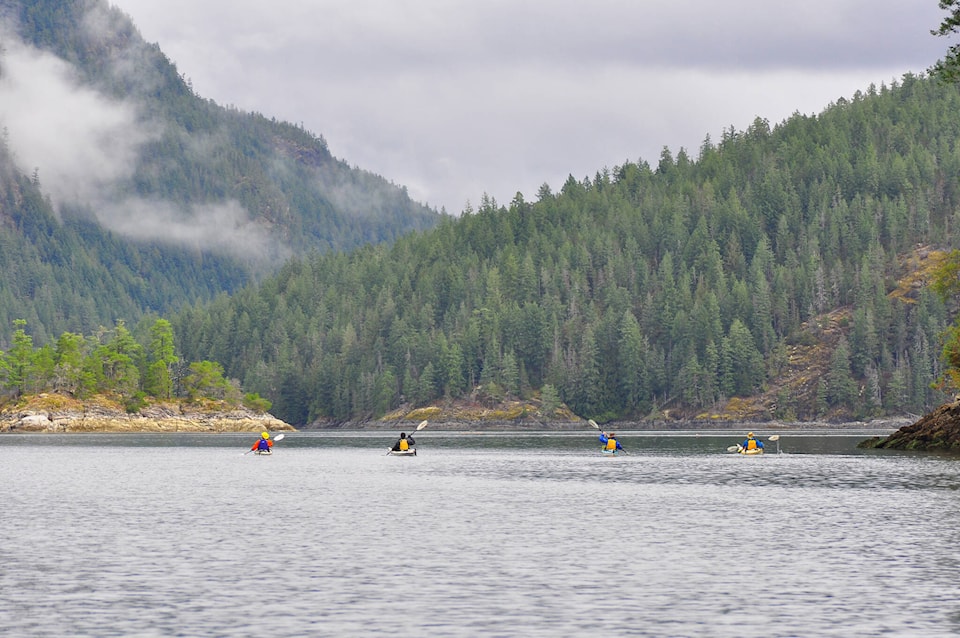Barb Thomson
Special to The Record
“Just don’t call us speedbumps,” I heard at a recent meeting of the Comox Valley Paddlers Club.
The kayak, unlike newer forms of recreational watercraft, comes with “an impressive pedigree dating back several thousand years,” writes author Shelley Johnson in The Complete Sea Kayaker’s Handbook, noting the anthropologist’s estimate of how long ago the Indigenous people of the Aleutian Islands paddled their skin-covered decked boats. From walrus hides to Kevlar, the ancient action of paddle to water remains unchanged.
I’ve also heard kayakers called the Rodney Dangerfield of boaters: “I don’t get no respect.”
The respect to kayakers is defined on the Canadian Laws Justice Website under Collision Regulations: “A power-driven vessel underway shall keep out of the way of (ii) a vessel restricted in her ability to maneuver.” In other words, to get out of the way. A speed and manoeuvrability contest between a powerboat and a kayak is no contest; a sudden late drop in engine speed creates an even larger bow wave for the kayaker to navigate. However, kayakers too, must respect the right-of-way and limitations of other vessels, especially in narrow or busy channels. An epitaph attributed to British surveyor Thomas Gray (1832-1890) reminds all mariners, big and small, when it comes to collisions at sea, no one is right:
“This is the grave of Michel O’Day
Who died maintaining his right of way.
His right was clear, his will was strong,
But he’s just as dead as if he’d been wrong.”
As our days shorten and darken, kayakers’ vulnerability increases. Guest speakers from RCM-SAR Station 60, Roch Massicotte and Chris Beech, spoke at the CV Paddlers Club meeting about safety and visibility, including the benefit of reflective tape on paddles. The kayak is a low-profile vessel: a paddler is slower, quieter, a more subtle presence on the water. Both reward and risk are present.
Even a brief scan through John Kimantas’s guidebook, The BC Coast Explorer and Marine Trail Guide, reveals the opportunity for intimacy with coastal wilderness simply not possible from the decks of larger vessels. The early kayak used for hunting and trade, then critical to human survival, still carries us today beyond ourselves, to leave off the incessant modern noise, and as Johnson writes, “let the rhythms, sounds, and challenges of nature come in.”
Barb Thomson is a boating enthusiast who writes regular columns for the Comox Valley Record.
Sources:
Comox Valley Paddlers: https://comoxvalleypaddlers.ca
National Center for Cold Water Safety: http://www.coldwatersafety.org/nccwsRules3.html
Paddling Magazine: https://paddlingmag.com
AdventureSmart: https://www.adventuresmart.ca
